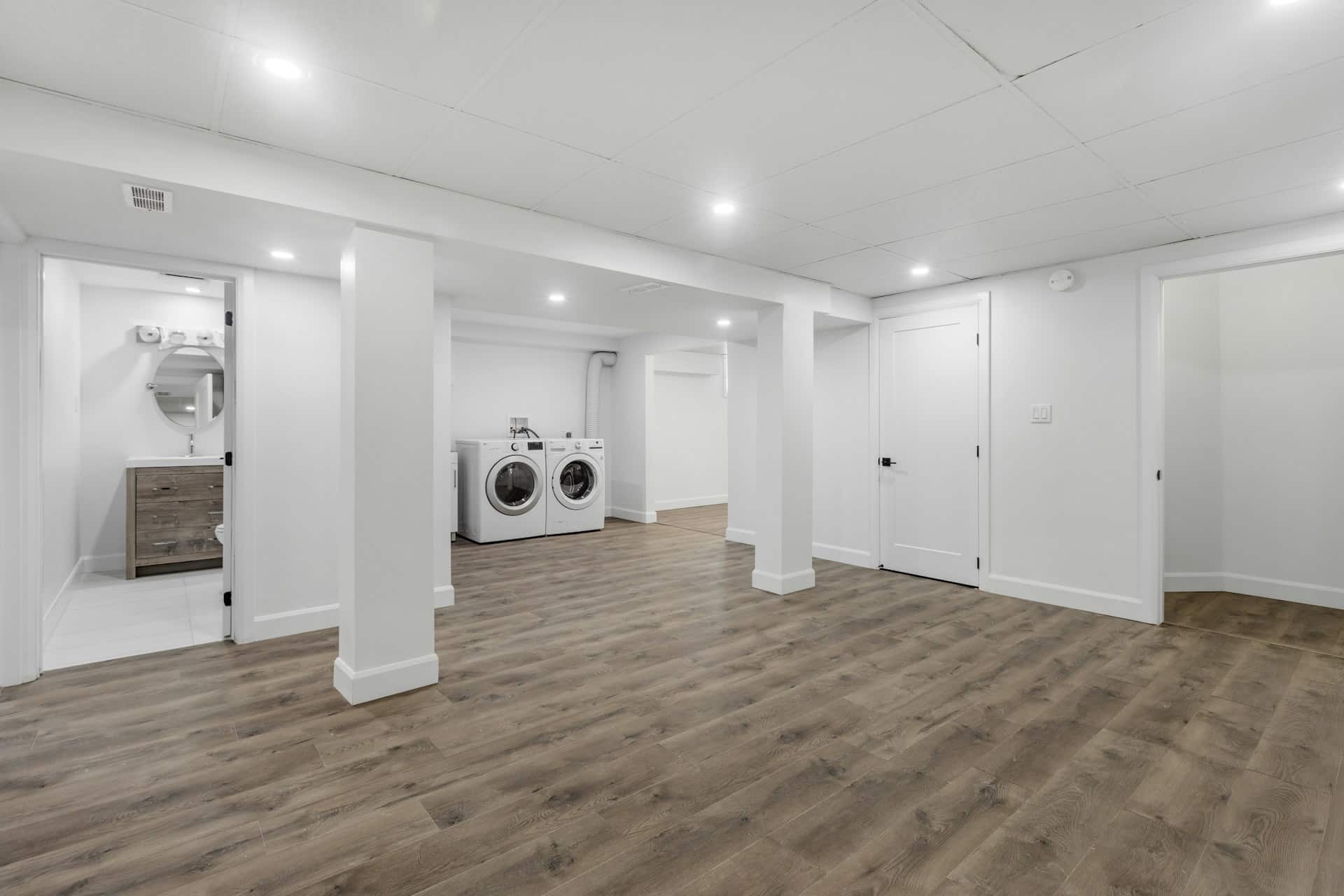If you own a historic UK property, preserving its charm while ensuring it’s structurally sound can be a delicate balancing act. One common issue owners of these properties face is damp and water damage — particularly in the basement. Regular water ingress can cause significant damage to the building’s foundation and walls. This article will explore the best non-invasive methods for basement waterproofing to help safeguard your property’s longevity while preserving its historic integrity.
Understanding Rising Damp and the Importance of Damp Proofing
Before delving into the methods of waterproofing, it’s important to first understand what causes dampness in a building. Rising damp is a common issue which occurs when moisture from the ground rises up through the walls due to capillary action. This can lead to moisture damage, salt accumulation, and potential structural concerns if left untreated.
En parallèle : How can you apply smart home features to control indoor temperature fluctuations in a UK heritage home?
Damp proofing (DPC) is a protective measure designed to resist the movement of moisture through walls and other building elements. It is typically achieved by creating a physical barrier, usually a layer of water-resistant material, within the construction of the building. DPC is a critical element in maintaining the structural integrity of a property and should be considered a crucial part of any restoration or maintenance work on a historic building.
Waterproofing Basement Walls with Membranes
One of the most effective and non-invasive methods of waterproofing a basement is the use of waterproofing membranes. These are essentially impermeable layers applied to the interior or exterior of a wall to prevent water ingress. They work by creating a barrier between the wall and the source of the moisture, effectively blocking it from penetrating the wall.
A lire aussi : How do you design a fire-resistant and eco-friendly roof for a UK log home?
Waterproofing membranes come in several types, including liquid-applied, sheet-based, and cementitious products. For historic buildings, it’s crucial to choose a breathable membrane. This type of membrane allows any existing moisture within the walls to escape while preventing new moisture from entering, thus reducing the risk of damage caused by trapped humidity.
Rising Damp Treatment through the Installation of a DPC
The installation of a damp proof course (DPC) is a traditional method for treating rising damp. The DPC is a horizontal barrier in the structure of a building, installed above ground level to prevent moisture from rising through the walls. Historically, this was done using materials like slate, bitumen, or even lead.
For a non-invasive approach, a chemical DPC can be used. This involves injecting a water-repellent chemical into the mortar course. Once it’s dispersed, it provides a water-repellent layer that stops the capillary action, preventing any further rising damp.
Use of Absorbent Materials for Moisture Control
Absorbent materials can be an effective solution for managing moisture levels within a historic basement. These materials, such as clay or calcium silicate, can absorb excess water from the air, reducing dampness and helping to control humidity levels in the basement.
Using absorbent materials is a relatively simple and non-invasive method of damp proofing. They can be applied to the walls and floors of the basement, and will start working immediately to absorb and hold moisture. Over time, they can significantly reduce the overall moisture content within the building, helping to prevent the onset of damp and the associated damage it can cause.
Proper Ground and Rainwater Drainage
Lastly, a crucial aspect of basement waterproofing is ensuring the property has good ground and rainwater drainage. This can be a particularly significant issue for historic properties, where the original drainage systems may not be sufficient or in good condition.
Groundwater can cause pressure against your basement walls, leading to damp and potential damage over time. Likewise, rainwater that isn’t properly directed away from the building can pool near the foundations, further increasing the risk of water ingress. By ensuring that your property has a well-maintained and effective drainage system, you can significantly reduce the risk of damp and water damage within your basement.
In conclusion, protecting a historic property from water damage requires a combination of methods. From installing a DPC to ensuring good drainage, these techniques will help ensure your building’s longevity while preserving its heritage and charm.
Installation of a Cavity Drain for Effective Damp Proofing
An efficient installation option for managing moisture intrusion in a historic UK property is the cavity drain. Offering a long-lasting solution, this method provides a robust way of preventing water infiltration in the basement. Cavity drain installation is considered a non-invasive procedure, as it does not require substantial excavation or alteration of the building materials.
The cavity drain system works by creating a drainage space within the walls, which allows for an effective collection of penetrating damp before it reaches the interior surface of the basement. The collected water is then channeled to a suitable drainage point using a pump or gravity. The implementation of such a system can significantly reduce the risk of damp issues in the long term.
While opting for this method, it’s advised to call heritage specialists who have a thorough understanding of old construction techniques and materials. Their expertise will ensure that the installation of the cavity drain maintains the historic integrity of the property while providing effective damp proofing.
Professional Damp Survey for Accurate Treatment
Regardless of the preventive measures taken, damp issues may still arise in a historic property. Regular inspection by a professional damp surveyor can help identify any potential problems early, before they escalate into more serious structural damage.
These experts can assess the condition of the existing damp proof courses, check for signs of rising damp, and evaluate the overall effectiveness of the waterproofing methods implemented. The surveyor’s report will provide vital insights into the state of the property and might recommend further treatments needed.
A professional damp survey is not just a useful tool for diagnosing existing issues, but also a proactive method for protecting your valuable asset in the long term. Regular monitoring and immediate addressing of damp problems can ensure the longevity and beauty of your historic property.
Conclusion
When administering waterproofing methods for a historic property, the objective is twofold: maintain the structural integrity of the building and preserve its historical charm. By understanding the perils of rising damp and the importance of damp proofing, you can select suitable non-invasive methods to prevent water ingress in the basement.
The use of waterproofing membranes, installation of a chemical DPC, use of absorbent materials, ensuring proper ground and rainwater drainage, and consideration of a cavity drain system are all effective approaches. A professional damp survey also plays an integral role in ensuring the continued health of the property.
In essence, basement tanking in a historic UK property does not need to be invasive or disruptive. With careful planning and a respectful approach to the building’s heritage, it’s entirely possible to protect these precious structures from damp, ensuring their longevity for generations to come.










